[car home Information] In recent years, more and more new energy vehicles have come into our sight. Whether it is the improvement of travel awareness or the helplessness of being forced to shake the number, in short, some consumers have already started to buy. Of course, one of the important reasons why new energy vehicles can enter people’s homes is the dual promotion of national and local subsidy policies, but in the face of these complicated policies, do you really understand them? Which "black boxes" are mixed with them, and you haven’t noticed them? Below, let’s talk together.
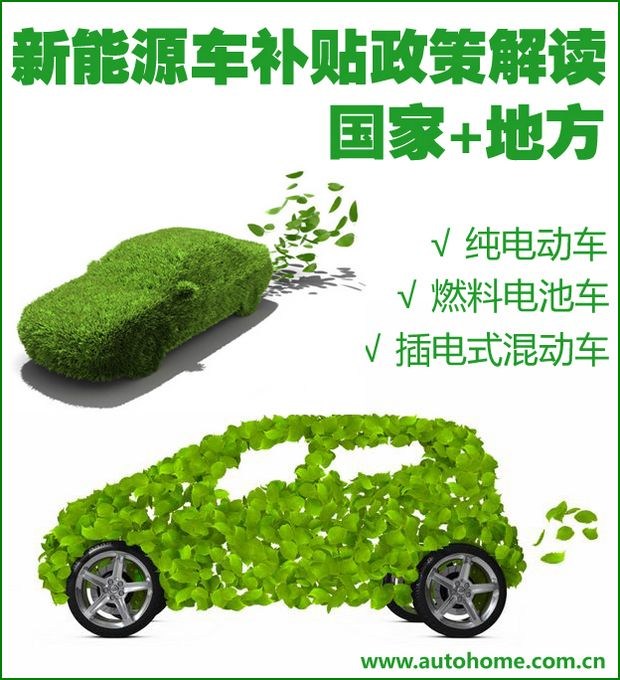
● "Double-decker" subsidy for new energy vehicles
If we talk about subsidies for new energy vehicles, perhaps most people know that "national+local" will give subsidies to consumers, but how much will the specific national and local governments make up? How to subsidize? Which new energy vehicles can enjoy? Maybe not many people fully understand it.
The first level: state subsidy policy.
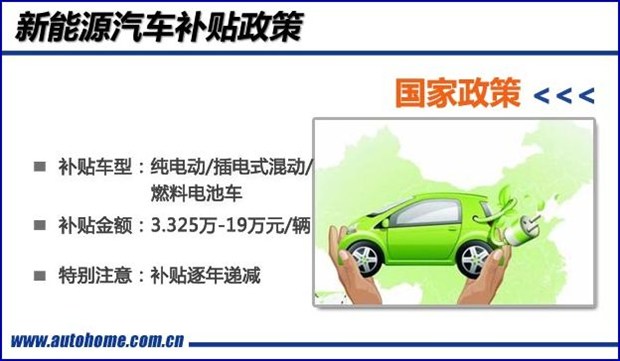
In order to accelerate the development of the new energy vehicle industry, in September 2013, the relevant state departments issued the Notice on Continuing to Promote the Application of New Energy Vehicles, which made it clear that in 2013 -2015, consumers will continue to be subsidized to buy new energy vehicles.
First of all, the scope of subsidies is new energy vehicles that are included in the scope of central financial subsidies, and the vehicles meet the requirements (what are the requirements? The third page details) pure electric vehicles, plug-in hybrid vehicles and fuel cell vehicles. Secondly, the state has made it clear that the new energy subsidies given are not for car companies and dealers, but directly for consumers. When buying new energy vehicles, consumers pay after deducting subsidies from the sales price.
(2013)
(2014)
Finally, it should be noted that the subsidy standard is decreasing year by year. This mainly takes into account the scale effect, technological progress and other factors. According to the notice issued by the state in February 2014, the subsidy standard was reduced by 5% in 2014 and by 10% in 2015.
The second level: local government subsidies
The country takes the lead in promoting new energy vehicles, and local governments naturally need to implement them. What’s more, in the Notice on Continuing the Promotion and Application of New Energy Vehicles issued in September 2013, it has clearly pointed out the demonstration areas that hope to "respond to the call" immediately, that is, Beijing-Tianjin-Hebei, Yangtze River Delta, Pearl River Delta and other areas with heavy fine particle control tasks.
I have to say that the response of local governments is indeed fast enough. In November 2013, the first batch of new energy vehicles were promoted and applied in the list of cities or regions (what does it mean to enter the list? The third page has been released, which covers the regional cities that were previously "named" by the state. Next, the editor will take four first-tier cities in North, Shanghai, Guangzhou and Shenzhen as examples to talk about the local subsidy policy for new energy vehicles.
Beijing:
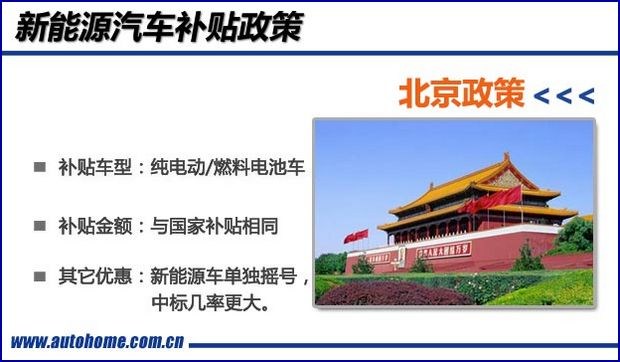
In January, 2014, the Beijing Municipal Government issued the Administrative Measures for Demonstration and Application of New Energy Passenger Cars in Beijing. The policy shows that the subsidy for purchasing new energy vehicles in Beijing is consistent with that of the state, that is, the subsidy standard is determined according to the ratio of 1:1 between the state and Beijing. However, it should be noted that the total financial subsidies of the state and Beijing do not exceed 60% of the vehicle sales price at the highest.
In addition, Beijing only subsidizes small and micro pure electric vehicles and fuel cell vehicles, and plug-in hybrid vehicles in the state subsidy policy are not among them. At the same time, only the new energy vehicles listed in the Catalogue of Recommended Vehicles for Demonstration and Application of Energy-saving and New Energy Vehicles and those listed in the Catalogue of Production Enterprises and Products of Beijing Demonstration and Application of New Energy Passenger Cars can enjoy subsidies. At present, the catalogue has not been published. Therefore, it is uncertain which new energy vehicles can be shortlisted.
In addition to price subsidies, you can buy new energy vehicles that meet the "conditions" in Beijing, and you can also shake the number in the configuration indicators of special new energy passenger cars. The results of the first lottery will be announced on February 26th, 2014. According to the data released by the Passenger Car Indicators Office, more than 1,700 applications and confirmation extensions for individual demonstration application of new energy passenger car configuration indicators have been received. According to the rough calculation of the quota and configuration ratio of passenger cars in this city this year, there will be 1,666 new energy vehicle indicators distributed to individuals in each period. Although the number of the first batch of applicants is slightly higher than the quota, it needs to be shaken, but compared with ordinary cars, the 98% chance of winning the bid for new energy vehicles is already much higher.
Shanghai:
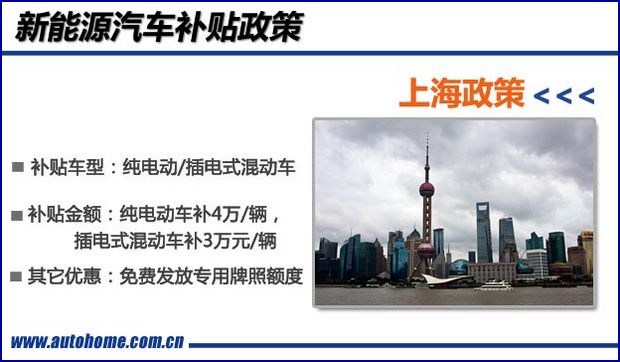
In 2012, Shanghai promulgated the Interim Measures for the Pilot Implementation of Encouraging Private People to Buy and Use New Energy Vehicles in Shanghai, in which plug-in hybrid passenger cars will receive a subsidy of 30,000 yuan each, and pure electric passenger cars will receive a subsidy of 40,000 yuan each, and special license plates can also be obtained free of charge (at present, the auction price of Shanghai automobile license plates is around 70,000 yuan-100,000 yuan). Of course, subsidized vehicles should also enter the Information Form of Pilot Vehicles for Private Purchase of New Energy Vehicles in Shanghai issued by the Shanghai Economic and Information Committee.
It is worth noting that the above policies expired at the end of 2012, and the new subsidy standards in Shanghai have not yet been introduced. However, the editor learned from the dealers in Shanghai that the purchase of new energy vehicles can still be implemented according to the old policy, and the new policy will be introduced in the near future, and the subsidy may be reduced.
Guangzhou:
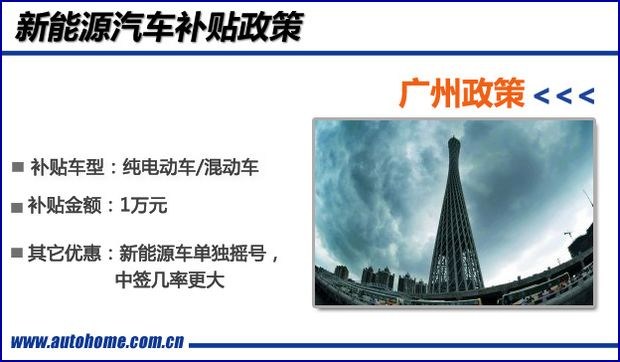
In 2012, Guangzhou issued the Trial Measures for Purchasing Subsidies for Energy-saving and New-energy minibuses in Guangzhou, which showed that after vehicle registration, new-energy minibuses and hybrid vehicles with a fuel saving rate of more than 20% were given a subsidy of 10,000 yuan per vehicle. Although the amount of subsidy is small, and the subsidized models also need to enter the Catalogue of Recommended Models for Demonstration and Application of Energy-saving and New Energy Vehicles of the Ministry of Industry and Information Technology, the models include non-plug-in hybrid models, and in theory, more models will be subsidized.
In addition, according to the "Trial Measures for the Regulation and Management of the Total Number of Small and Medium-sized Passenger Cars in Guangzhou", all new energy vehicles that meet the "conditions" can also be shaken in the incremental indicators of 12,000 new energy vehicles in Guangzhou. Compared with ordinary cars, the chances of winning the lottery are higher.
It is understood that the "Trial Measures for Purchasing Subsidies for Energy-saving and New Energy minibuses in Guangzhou" will expire on March 31, 2014, and there is no continuous policy yet. Not long ago, Pan Jianguo, director of the Guangzhou Municipal Development and Reform Commission, revealed that in the future, Guangzhou citizens will be subsidized to buy new energy vehicles according to the ratio of 1: 1 between the central and local governments. In addition, citizens who buy new energy vehicles can also apply for a lottery directly. From this point of view, Guangzhou will soon adjust the existing subsidy and lottery policy for purchasing new energy vehicles to adapt to the national subsidy policy in the next few years.
Shenzhen:
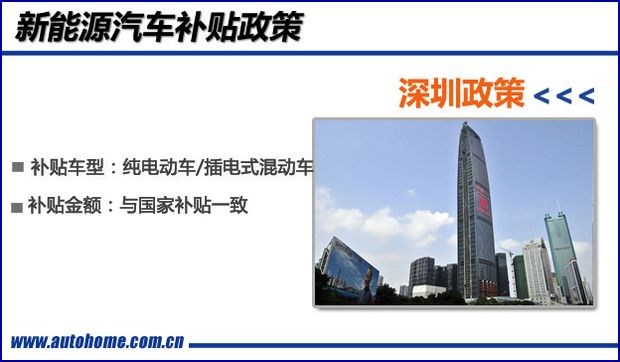
In 2010, Shenzhen’s "Subsidy Policy for Private Purchase of New Energy Vehicles" was first introduced. At present, Shenzhen can enjoy the national and local 1:1 subsidy policy for purchasing electric vehicles and plug-in hybrid vehicles. It is also known that in the face of the new energy subsidy continuation policy issued by the state, Shenzhen is working on the relevant detailed rules for local new energy vehicle subsidies. The proposed plan may not be "decreasing year by year" like the central financial subsidy, but continue to adopt the original subsidy standards, namely, the maximum subsidy for pure electric vehicles is 60,000 yuan/vehicle, and the maximum subsidy for plug-in hybrid vehicles is 35,000 yuan/vehicle.
● Those "black boxes" mixed in the new energy vehicle policy.
After a general understanding of the national subsidy and local subsidy policies for new energy vehicles, most consumers will think that these policies are perfect. However, after editing and investigation, it is found that some key issues are very obscure, and they are like "black boxes". If we don’t open them one by one, we will inevitably have misunderstandings in the purchase of new energy vehicles.
It is not possible to buy new energy vehicles in any area.
It has been clearly pointed out in the notice on continuing to promote and apply new energy vehicles issued by the state that it will continue to promote and apply new energy vehicles relying on cities, especially megacities. If the conditions of demonstration cities or regions are met, an implementation plan for the promotion and application of new energy vehicles can be compiled and submitted to the four ministries and commissions, and the list of demonstration cities can be determined on the basis of merit.
In other words, only cities that enter the demonstration list can promote new energy vehicles, and local consumers can buy new energy vehicles locally and enjoy subsidies. At present, the four ministries and commissions have published two lists of cities or regions for the promotion and application of new energy vehicles, including first-tier cities in North, Shanghai, Guangzhou and Shenzhen, as well as urban agglomerations such as Hebei Province and Zhejiang Province. According to statistics, the two lists include 40 pilot cities or regions. If you want to know whether your place is a new energy demonstration city, you can click here to see [1] [2].
Not all new energy vehicles can enjoy state subsidies.
When understanding the national subsidy policy, we must carefully read the scope of subsidized vehicles, because not all new energy vehicles can get subsidies.
According to the Notice on Continuing the Promotion and Application of New Energy Vehicles, the new energy vehicles included in the scope of central financial subsidies should meet the requirements of pure electric vehicles, plug-in hybrid vehicles and fuel cell vehicles. Among them, the words "meet the requirements" mean that vehicles need to enter the Catalogue of Recommended Vehicles for Demonstration and Application of Energy-saving and New Energy Vehicles, and the vehicles that enter this catalogue are selected from the Announcement of Vehicle Manufacturers and Products of the Ministry of Industry and Information Technology, and only domestic vehicles such as independent and joint ventures will be included in this announcement.
Around so long, in fact, to put it bluntly, it is a sentence-Imported new energy vehicles cannot enjoy state subsidies.. Having said that, I believe many friends will question, isn’t the preferential policy given by the state to new energy vehicles just to promote energy conservation and emission reduction and promote air pollution control? So why is there a "nationality" when facing new energy vehicles?
In my opinion, the national new energy subsidy policy will shut out imported cars, so the scope of consumers will be reduced when buying cars; However, on the other hand, if subsidies are given to imported new energy vehicles, it is likely to increase their sales, which will certainly have an impact on self-owned brand vehicles and will not help China’s new energy vehicle industry to substantially improve. However, the subsidy policy is not to save the poor. Without core technology, it is impossible to speed up the industry by relying on policy subsidies blindly. Because the national policy has also given multinational car companies a new export-domestic.
Reading the Notice on Continuing to Promote and Apply New Energy Vehicles carefully, it is not difficult to find that the relevant policies issued by the state are first to accelerate the development of new energy vehicle industry. Although the subsidy policy refuses to import new energy vehicles, joint ventures can make imported new energy vehicles domestically or build joint-venture independent products to obtain subsidies. In this way, we can still leave some technology behind. At present, in fact, many joint ventures have set foot on the road of joint ventures and independent brands, and in order to comply with national policies, their first products have been designated as new energy vehicles, such as Dongfeng Nissan Qichen Chenfeng e30, FAW-Volkswagen Carrier Electric Vehicle, BMW Brilliance and so on.
Enjoy the "state" subsidy models, may not be able to get subsidies in the "local".
In theory, new energy vehicles that can receive state subsidies will naturally receive subsidies from local governments. But after investigation, it is found that this theory may not work everywhere.
For example, the new energy vehicles that enjoy local subsidies in Beijing do not include plug-in hybrid vehicles, and only pure electric vehicles and fuel cell vehicles that enter the Catalogue of Beijing Demonstration and Application of New Energy Passenger Cars, which is formulated by Beijing itself, can enjoy government subsidies.
When communicating with some dealers, the attitudes of dealers of different brands are also obviously different. A BYD salesman said, "Now you can’t get subsidies for buying e6 electric cars in Beijing, and it’s uncertain whether you will enter the subsidy catalogue in Beijing in the future.". In contrast, the dealers of Beijing Automobile are very confident, and the sales said, "Beiqi electric vehicles have entered the Beijing subsidy catalogue, and now they can enjoy a 1:1 subsidy when buying a car."
Not only in Beijing, but also in Shanghai, the sales staff of Roewe 4S store said that "E50 electric vehicles can enjoy subsidies". Another dealer said, "You can’t get subsidies for buying BYD e6 here". It is understood that only vehicles that enter the Shanghai new energy vehicle subsidy catalogue can enjoy local subsidies. At present, the Shanghai Economic and Information Committee has announced four batches, among which the local brand models Shanghai GM Sail SPRINGO electric vehicle and SAIC Roewe E50 were the first to be approved.
What causes the local subsidy policy to take more care of "local electric vehicles"? Some insiders said that this is the same as the state subsidy refusing to import cars, and it is "local protection". We won’t discuss this too much for the time being. After all, the first batch of subsidies in Beijing has not yet been issued, and the relevant rules for new energy vehicles in other regions have not yet landed. At present, the state has made it clear that the number of foreign brands in vehicles promoted and applied in demonstration cities or regions shall not be less than 30%. Do not set up or set up obstacles in disguise to restrict the purchase of foreign brand vehicles. Literally, the state’s attitude towards "local protection" is very firm, and we hope that this requirement will not become a dead letter when it is implemented and supervised.
New energy vehicles are not sold in all 4S stores.
In addition to policy-related matters, at present, some automobile manufacturers are not in place in the pre-sales service of new energy vehicles. Not long ago, the editor, as a potential consumer of new energy vehicles, tried to consult some information about new energy vehicles through the internet and telephone. From the result, the experience is not ideal.
On the official websites of some car companies, there is no detailed introduction to their electric vehicles. On some websites, even the place of sale is not publicized. The editor continuously called a brand’s 4S stores in three different regions to consult new energy vehicles, but they were all told not to sell them here, and a 4S store selling electric vehicles also introduced the local electric vehicle subsidy policy vaguely.
Here, I hope that manufacturers can quickly establish a set of perfect pre-sales and after-sales systems for new energy vehicles. At the same time, it is also suggested that potential users of new energy vehicles can consult the official 400 first to find out where the vehicles are sold, which can reduce useless work to some extent.
● Summary:
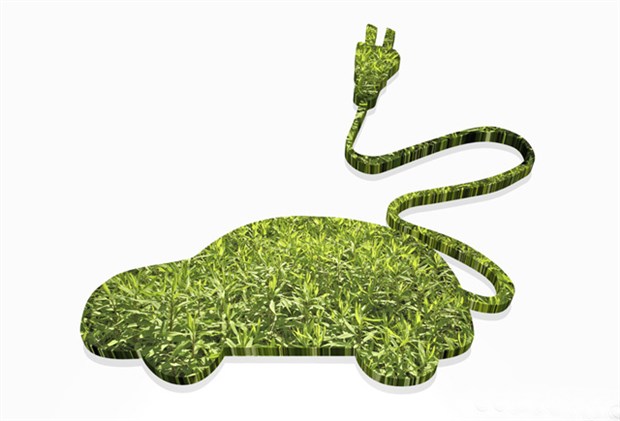
The subsidy policy itself is a catalyst for the development of new energy vehicles. The state and local governments go into battle together, so that consumers can get double benefits when buying new energy vehicles, which can effectively increase the sales of new energy vehicles. In addition, if we can make no distinction between "nationality" and "household registration", or at least get through the latter, so that new energy vehicles can be subsidized in more cities, perhaps new energy vehicles can develop faster in China.
Of course, it is far from enough to rely on policy support to promote new energy vehicles, and it is particularly important to rapidly develop the construction of related supporting facilities. At present, the state has made it clear that if applying for a demonstration city or region, it is necessary to formulate plans for the cumulative promotion of new energy vehicles and the construction of supporting facilities. Whether these military orders can be realized in future demonstration cities is worthy of attention. (Text/car home Qi Tianxiang)
Read more:
The maximum reduction is 60,000. Take stock of new energy vehicles under the new subsidy policy.
http://www.autohome.com.cn/news/201310/629909.html